Equipment
My Not Nearly Complete, But Rather Entertaining, Circular Polarizer Filter Article
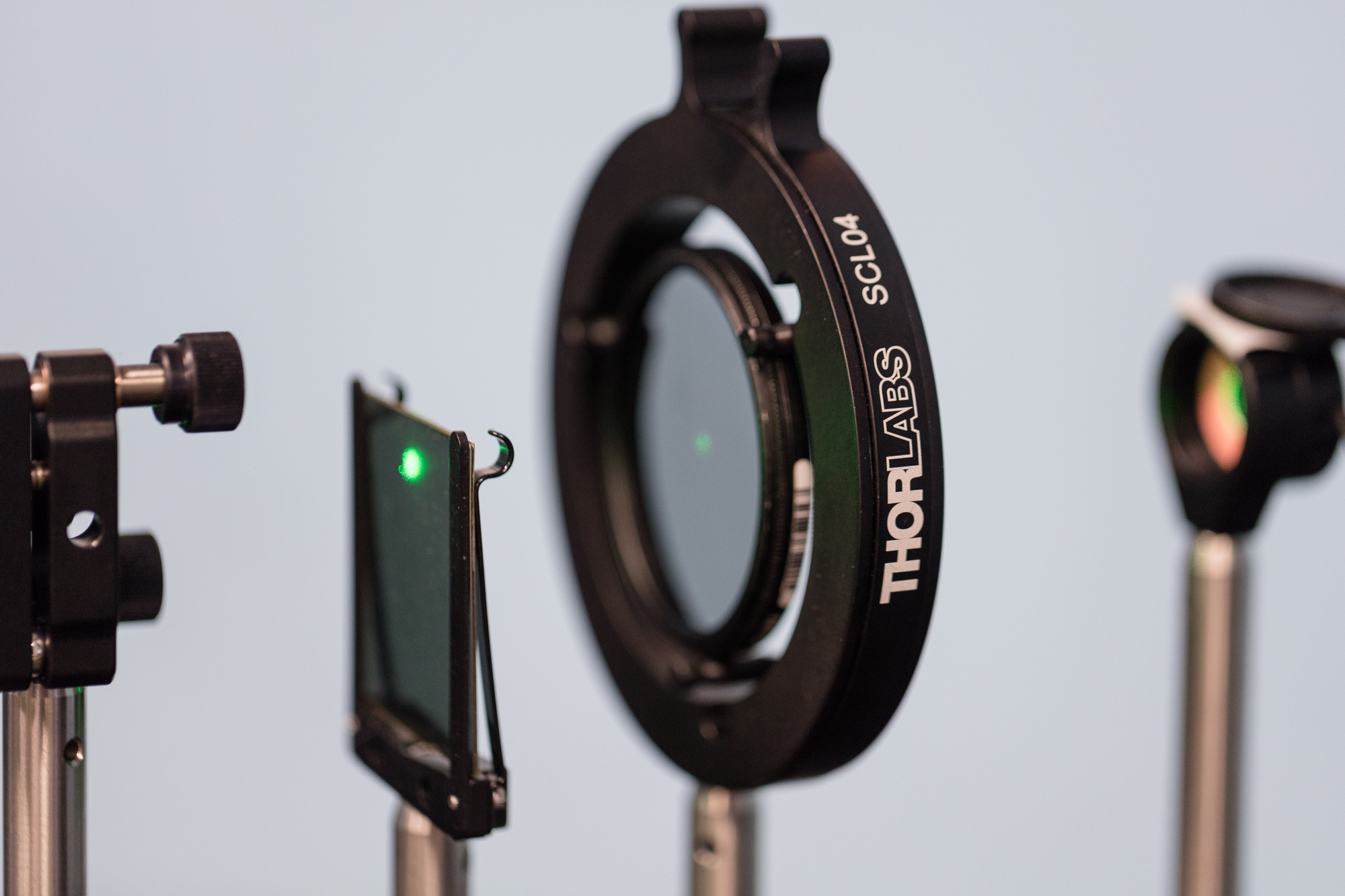
So, a while back I wrote a not quite complete article on UV filters. To do that, I had to buy new testing equipment and learn to test filters. This was not what I wanted to do when I grew up. But somebody has to do it, and I did get to buy new toys.
More importantly, Tyler (Who handles the purchasing) asked me why, many years ago, I chose the Circular Polarizing filters that Lensrentals stocked. A better person than me would have confessed that I’ve never known the first thing about Circular Polarizers; that I just bought the most expensive to be our ‘best’ and the cheapest to be our ‘basic.’ But instead, I just said, “Well, we should do some scientific-type testing and a more thorough evaluation now.”
Like a metaphor for my life, the results ended up being the opposite of what I expected. I thought if we found tons of differences testing simple clear and UV filters, there would be many more differences in more complex polarizing filters. So today, instead of showing you amazing differences between the various brands, I’ll just save you some money on your next CP filter purchase. That should work out for both of us: you save money, I get a shorter blog post.
I should mention our methodology has improved somewhat since we did our first filter article. I used a red laser to measure transmission then, and several people made the very reasonable suggestion that a green laser might be a better choice, being in the middle of the spectrum and all. Other people said I should get a spectrometer and measure the entire spectrum. So I did both of those things.
This should give you some hints about me as a person. If someone asks me to test a lens at a different aperture, I have a screaming fit about testing taking up a few hours of my time. Someone suggests I spend $15,000 on new equipment, and I’m like, “Yeah, great idea, that would be cool to have.”
Finally, I had no intention of testing every polarizing filter on the market. I did what I usually do; bought the ones B&H Photo had in stock in 77mm size. So we’re going to compare, in no particular order, except alphabetical, with the current price for a 77mm:
- B&W XS-Pro High-Transmission Circular Polarizer MRC-Nano $102
- Heliopan Circular Polarizer $200
- Marumi EXUS Circular Polarizer Filter $140
- Sigma Water Repellent Circular Polarizing Filter $150
- Tiffen Ultra Pol Circular Polarizing Filter $103
- Zeiss T* Circular Polarizing Filter $180
So, About the Polarizing Part
If you’re thinking about buying a circular polarizing filter, you probably want to know which ones polarize the best and which ones the worst, right? I know I did. Now we could have just gone outside and taken pictures in the bright sun and said this one’s good and that one’s bad. But we never do anything simple when we can complicate the crap out of it.
So what we did was take our laser transmission set up and modified it a bit. Primarily, this shines a laser into a power meter and gets a reading. Then we can stick mostly transparent stuff in the beam and see how much it reduces the power reaching the meter. Excellent lasers are almost entirely polarized, but I have a budget, and that budget didn’t include (much to my sorrow) $10,000 for the lab-grade, steel-melting laser I wanted. I got a little 5-mwatt green (530 nm) diode laser.
It’s sort of polarized. So we shined that laser through two sheets of polarizing film, each of which have a 1,000:1 polarizing extinction ratio. So basically, the light that passed through the film was really, really polarized. Then we put the filter in the beam of polarized light to see how much light it let through in the open position. For now, we’ll just call it ‘most of the light.’ Finally, we moved the lens to the polarizing position, which should have blocked all of our polarizing light if the filters were really effective.
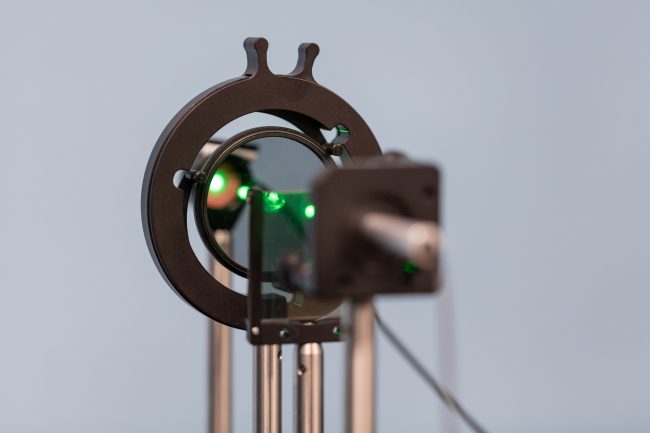
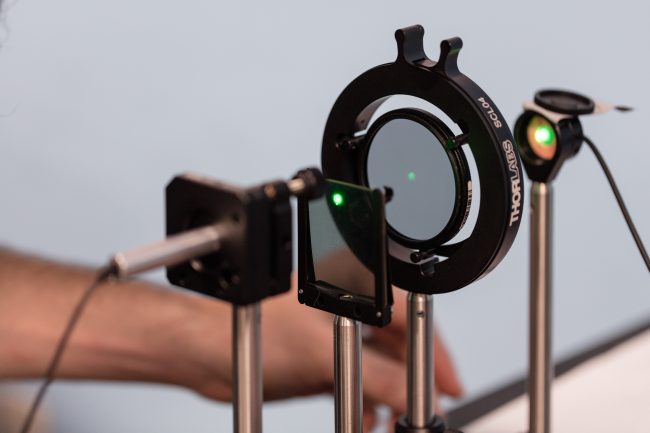
Here’s where I expected to put a table showing how efficient the polarizers were. Instead, I’ll just tell you that all of the polarizers we tested blocked all of the light, within our capabilities of measurement. They were all at least 99.9% efficient at doing their job, polarizing light. There’s something you don’t see very often; a photography product that completely does what it says it will do.
Also About the Glass
When we tested UV filters, we found several for which the glass wasn’t flat. We repeated the test on all of the CP filters, and all passed with flying colors, so I won’t bore you with repeating it. Again, my expectation was with two pieces of glass we might see more, not less, bad glass. But no, they all passed just fine. That may be that better glass is used in CP filters, or the polarizing effect evens things out. I don’t know. But they all passed just fine.
What About Light Transmission?
If you’ve ever used a CP filter you are probably aware that even when not polarizing it absorbs some light. You should be aware of this because, well, it’s darker when you look through it. We thought it would be worthwhile to see how much light it does absorb.
Why? Well, partly because we had that laser transmission bench already set up, but mostly because two of these filters claim to let more than 99% of light through. The Marumi claims it lets 99.4% of light through, and the B&W High transmission says it passes through 99.5%.
No, I’m not a rocket scientist, I’m just a regular scientist. But high-tech scientific principles tell me that since everything looks a bit dark when looking through these CP filters, it’s unlikely that more than 99% of the light is passing through the filter. But maybe that’s just me being cynical. Or maybe there are alternative facts that say darker isn’t the same as less light.
Anyway, since I was rather fired up and my BS meter was pegged at full maximum, we removed the linear polarizers and measured absolute transmission for each filter in the non-polarizing position. If you remember, when we tested clear filters the best let 99% of light through, the worst was down around 90%.
The transmission results for CP filters were:
| Filter | Transmission |
|---|---|
| Marumi | 91% |
| B&W | 88% |
| Sigma | 68% |
| Zeiss | 66% |
| Heliopan | 58% |
| Tiffen | 55% |
Now, the Marumi and B&W are nowhere close to 99% transmission, but I will admit that they did indeed have higher transmissions than the others.
Some, probably most, people don’t care about how much ND effect their circular polarizer has, and if they do they may well not want the higher transmission variety, they’d prefer a bit more light blocking. After all, if you need a circular polarizer, you probably are shooting where there is lots of bright sunlight. But the takeaway message is that higher transmission filters do tend to give more transmission. Just not as much as is claimed.
Let There Be Spectrometry
And so, in the days after the first article, the people spoke as one and said, “You show us but one wavelength of light, yet there are as many wavelengths as there are fish in the sea. Give us spectrometry, that we may see the effect on all manner of wavelengths, each unto its own kind. And make the graphs brightly colored.”
It’s taken several weeks for us to get things calibrated and running, but this post seems a good place to start using our new spectrometer. We know that some polarizers give a bit of color cast, especially when polarizing, so we thought it would be interesting to see look at their transmission spectra.
We looked at transmission both in the open and polarizing position and did not see any changes with these polarizers. I’m told there are some that do have a color change with polarizing. I’m only showing you one spectrometry report for each filter, to keep this short post short. Also, don’t put much stock in the absolute transmission between the filters. We weren’t testing for absolute transmission since we’d already done it; we just wanted to look at the curves.
The High-Transmission CPs
The Marumi and B&W filters have similar transmissions and very similar spectra. Both tend to have some UV filtering activity and drop off a little bit at the blue end of the spectrum.
Marumi
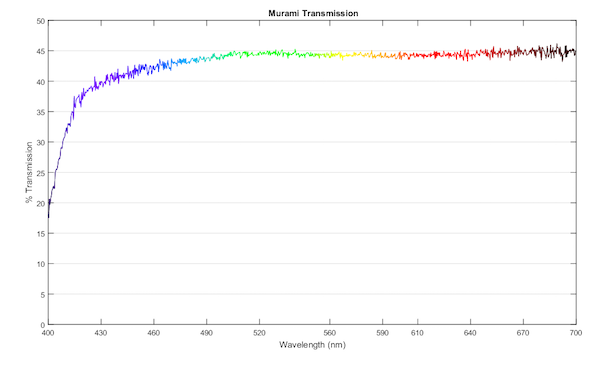
Olaf Optical Testing, 2017
B&W
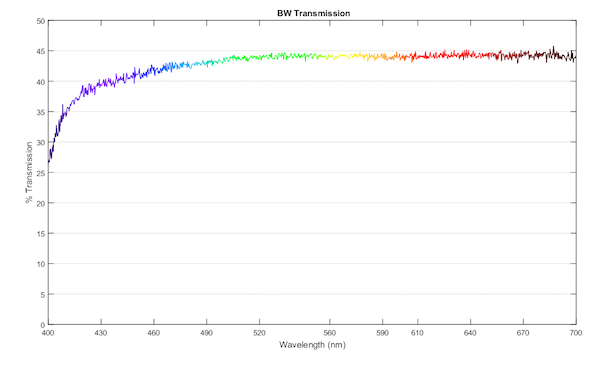
Olaf Optical Testing, 2017
The Standard CPs
These all have a stronger Neutral Density effect than the first two, and their spectra are different, too. The Sigma, Zeiss, and Heliopan filters are all very similar with a bit more transmission at the blue end of the spectrum and a bit less in the red-yellow range. The Tiffen has a similar pattern, although maybe a tiny bit more of a green peak.
Sigma

Olaf Optical Testing, 2017
Zeiss T*
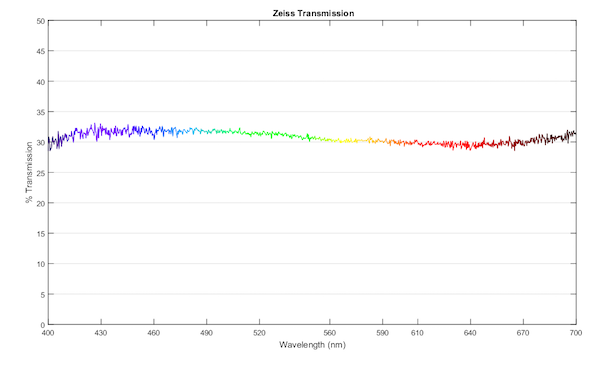
Olaf Optical Testing, 2017
Heliopan Digital
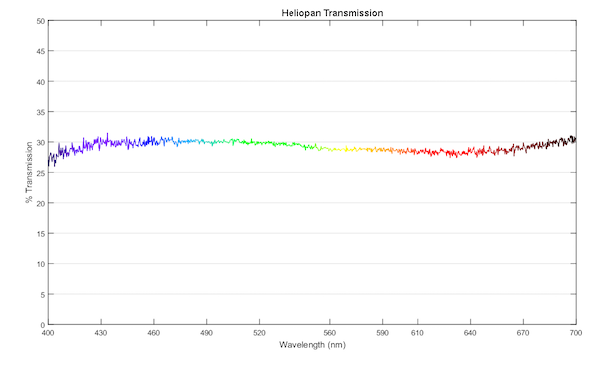
Olaf Optical Testing, 2017
Tiffen
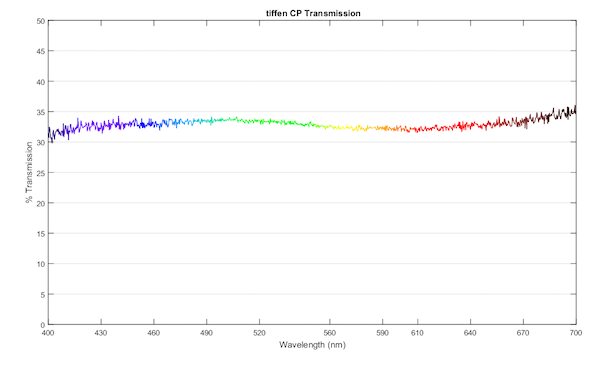
Olaf Optical Testing, 2017
So What Did We Discover Today?
Well, several things, one of which is really useful. So I’ll get that one out of the way first, and then let this post just steadily deteriorate. If you are buying a circular polarizing filter because you want some circular polarizing, it doesn’t seem to matter much which one you choose; they all polarize like gangbusters. So I saved you some money today.
The second point, one which I’ve been told before I did all this testing, is set the white balance after you put the CP filter on, not before. Because CP filters will have a color cast. Or just shoot in raw and fix it later, which is what we mostly do anyway.
There is a third point, and it’s a painful one:
Once Again, Roger Lets Technology Triumph over Common Sense
I didn’t want to test filters; I really didn’t. But people wanted me to. So I chewed up my testing equipment budget to buy laser transmission stuff and an optical spectrometer, spent a few weeks getting everything calibrated and establishing norms, and then a couple of days testing these CP filters. I did this in clear violation of Roger’s Third Law: No Good Deed Goes Unpunished.
After I was done, I told Aaron I had just documented that CP filters had different light transmission percentages and different color casts. And that high transmission filters had one look, and it was different than regular CP filters, which all were really similar. Because I was proud that my investment in time and money had paid off.
Aaron took the filters from me, put them on a piece of paper, took this picture with his cell phone, and said, “Yeah, you’re right.”
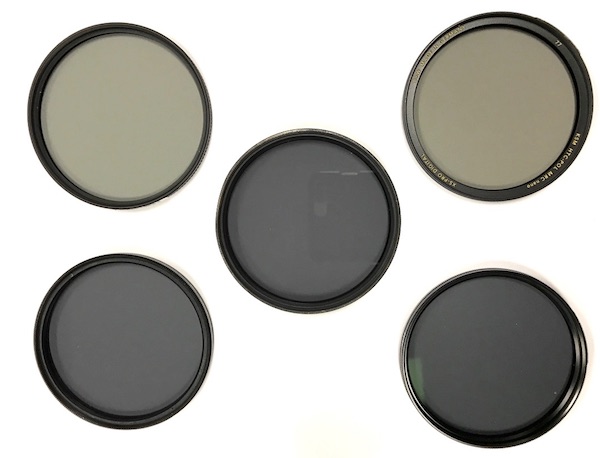
Oh, and BTW – I know what you’re thinking. Yes, I’m going to publish spectrometry reports on the clear and UV filters we tested in the last article. Next week, I promise. I need a few days to recover my pride.
Roger Cicala and Aaron Closz
Lensrentals.com
September, 2017
Addendum: MTF testing
Several people made the very pertinent comment that they would expect some effect in sharpness and contrast. FWIW I took a moderate telephoto, very sharp lens (Batis 135mm f/2.8) and MTF tested it first with no filter, then with a B&W Multi-coated clear filter, then 4 of the CP polarizing filters we tested above.
The clear filter made absolutely no MTF difference.
All tested polarizers (B&W, Marumi, Zeiss, Tiffen Ultra, and Helipan) caused a slight decrease in MTF at high frequencies. There was no detectable change at 10 and 20 lp/mm. At 30 lp/mm there was a consistent 1-2% drop, at 50 lp it was about 4%. All of these CP filters were very similar, I could detect no difference between them.
This is a quick, off-the-cuff check. I’ll look at things in more depth when I have time. But the bottom line is fine detail in photos is affected a bit. I don’t find that the least bit surprising.
I’ve also ordered a couple of $40 filters and we’ll see how those compare.
Author: Roger Cicala
I’m Roger and I am the founder of Lensrentals.com. Hailed as one of the optic nerds here, I enjoy shooting collimated light through 30X microscope objectives in my spare time. When I do take real pictures I like using something different: a Medium format, or Pentax K1, or a Sony RX1R.
-
J.C. Overgaard
-
TomDibble
-
TomDibble
-
tommylapi
-
wheatridger
-
wheatridger
-
tyger11
-
Brandon Dube
-
wheatridger
-
wheatridger
-
Roger Cicala
-
Rick
-
Adam Rubinstein
-
Impulse_Vigil
-
Roger Cicala
-
Roger Cicala
-
kain0m
-
wince
-
Kachadurian
-
Karl Perry
-
J.C. Overgaard
-
Roger Cicala
-
Rick
-
Dickson Leung
-
Matthew Rakola
-
Roger Cicala
-
Carleton Foxx
-
davv
-
Brandon Dube
-
Roger Cicala
